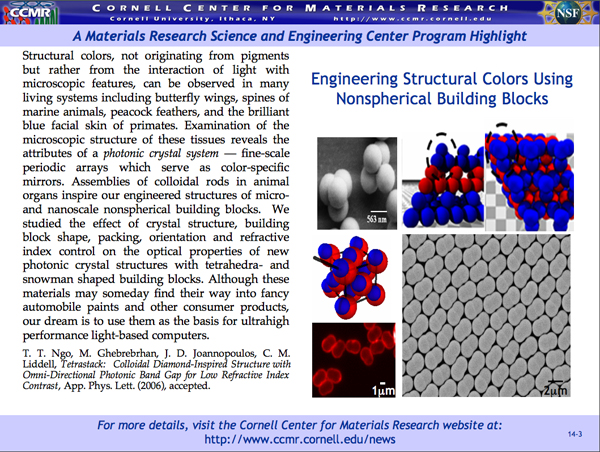
T. T. Ngo, M. Ghebrebrhan, J. D. Joannopoulos, C. M. Liddell, Tetrastack:Colloidal Diamond"Inspired Structure with Omni"Directional Photonic Band Gap for Low Refractive Index
Contrast, App. Phys. Lett. (2006), accepted." /> Structural colors, not originating from pigments but rather from the interaction of light with microscopic features, can be observed in many living systems including butterfly wings, spines of marine animals, peacock feathers, and the brilliant blue facial skin of primates. Examination of the microscopic structure of these tissues reveals the attributes of a photonic crystal system —fine"scale periodic arrays which serve as color"specific mirrors. Assemblies of colloidal rods in animal organs inspire our engineered structures of micro"and nanoscale nonsphericalbuilding blocks. We studied the effect of crystal structure, building block shape, packing, orientation and refractive index control on the optical properties of new photonic crystal structures with tetrahedra"and snowman shaped building blocks. Although these materials may someday find their way into fancy automobile paints and other consumer products, our dream is to use them as the basis for ultrahigh performance light"based computers.
T. T. Ngo, M. Ghebrebrhan, J. D. Joannopoulos, C. M. Liddell, Tetrastack:Colloidal Diamond"Inspired Structure with Omni"Directional Photonic Band Gap for Low Refractive Index
Contrast, App. Phys. Lett. (2006), accepted